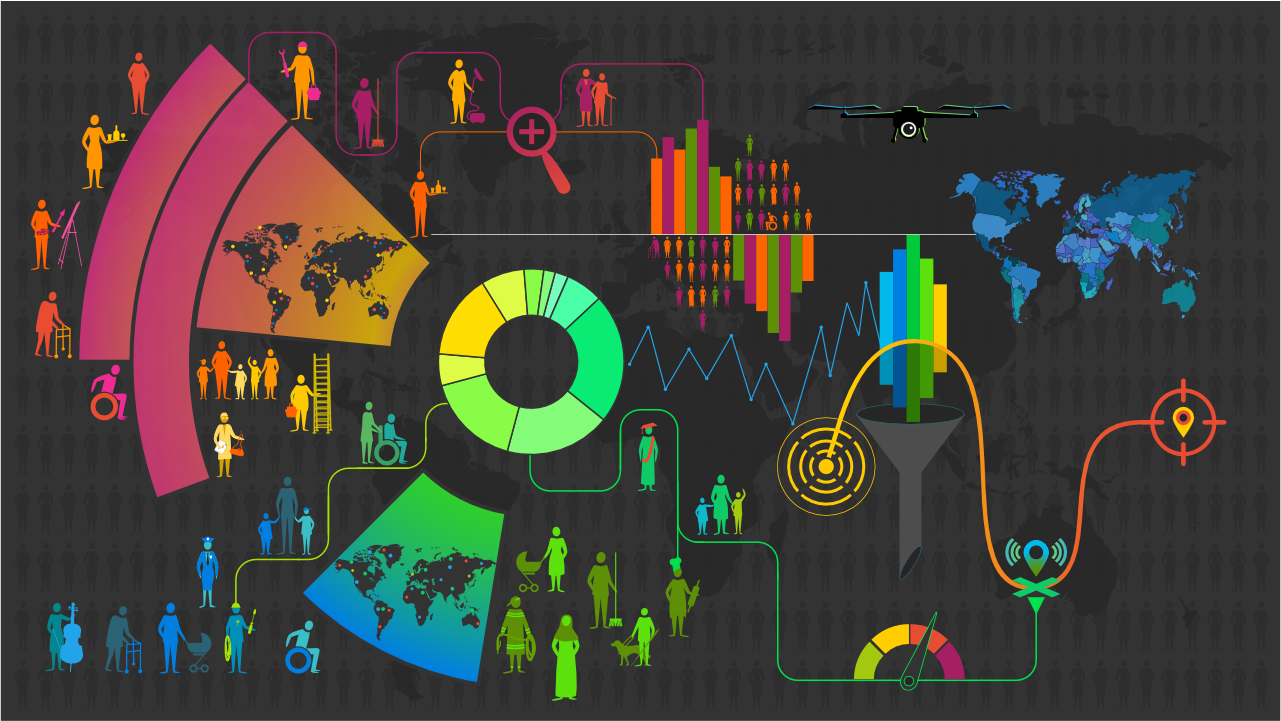In Technology Is Not Neutral, Stephanie Hare provides a practical overview of the complex topic of technology ethics. This is an accessible introduction that guides the reader through common questions, including whether technology can be neutral, where we draw the line when it comes to technology ethics and how we can apply these ideas to real-world examples, writes Sophie Taylor.
This blogpost originally appeared on LSE Review of Books. If you would like to contribute to the series, please contact the managing editor of LSE Review of Books, Dr Rosemary Deller, at lsereviewofbooks@lse.ac.uk.
Technology Is Not Neutral: A Short Guide to Technology Ethics. Stephanie Hare. London Publishing Partnership. 2022.
 What is technology ethics? Ask a computer scientist, a philosopher or a sociologist and you’ll certainly get very different responses. In her ambitious book, Technology Is Not Neutral: A Short Guide to Technology Ethics, Stephanie Hare attempts to answer this difficult question by weaving together perspectives from science and technology studies (STS), the digital humanities and human-computer interaction (HCI), as well as her underpinning philosophical framework. By confidently combining these multiple viewpoints, Hare examines what technology ethics is, whether technology can ever be considered ‘neutral’, where we draw the line when it comes to technology development and how these questions manifest in the context of facial recognition and COVID-related technologies.
What is technology ethics? Ask a computer scientist, a philosopher or a sociologist and you’ll certainly get very different responses. In her ambitious book, Technology Is Not Neutral: A Short Guide to Technology Ethics, Stephanie Hare attempts to answer this difficult question by weaving together perspectives from science and technology studies (STS), the digital humanities and human-computer interaction (HCI), as well as her underpinning philosophical framework. By confidently combining these multiple viewpoints, Hare examines what technology ethics is, whether technology can ever be considered ‘neutral’, where we draw the line when it comes to technology development and how these questions manifest in the context of facial recognition and COVID-related technologies.
Although those working or researching in the area of technology ethics might find the book’s themes familiar, it provides an accessible entry point into technology ethics for undergraduate students or those with little prior exposure to the topic. Stylistically, the book is a pleasure to read, weaving together a simple introduction to Hare’s technology ethics framework (Chapter Two) with case studies and quotes from a range of sources. In this respect, it distinguishes itself positively from the academic literature on the topic, which often presumes prior knowledge of philosophical or social theory.
However, the book’s ease of reading perhaps comes at the cost of deeper engagement with the range of literatures Hare addresses. For example, in Chapter One, Hare explores the question: is technology neutral? She begins with an expansive view of technology, with examples ranging from kitchen forks to forms of government. However, Hare ultimately decides to focus on those which sit within the ‘grey space’: that is, technologies that shift our understanding of the world (33-35).
Stylistically, the book is a pleasure to read, weaving together a simple introduction to Hare’s technology ethics framework with case studies and quotes from a range of sources.
Here, Hare takes a somewhat ahistorical view of technology, arguing that ‘the fork and the wheel, important inventions though they are, do not alter our experience of being human in the same way as information and communication technologies’ (34). However, not only do wheels and forks shape our conceptions of time, culture and family, arguably profoundly shifting our understanding of the world, but they also cannot be divorced from information and communication technologies. Indeed, early computers such as the Enigma machine and its variants depended on wheels to function. Thus, in attempting to create distinct boundaries between technological entities, Hare overlooks the ways in which technology is relationally produced. In this instance, Hare would have benefitted from engagement with STS literature such as Susan Leigh Star’s work on infrastructures, which reminds us how one person’s mundane wheel is another person’s mode of communication or yet another person’s object of work.
Hare continues her exploration of whether technology is neutral by raising the distinction between intention and impact. She does so by diverging into the literature on animal and plant intelligence, distinguishing between chimpanzees’ use of spears for hunting and hermit crabs’ borrowing of other animals’ shells to protect themselves – presenting the former as ‘intelligent use’ of technology and the latter as a result of ‘genetic coding’ (37). Consequently, Hare suggests that since ‘a hermit crab is genetically coded to carry around other creatures’ shells [… it] is not responsible for its actions […] Its use of other creatures’ shells is neutral’ (37). Here, Hare alludes to the notion that a technology can be considered neutral if it is not intelligent and if its consequences cannot be attributed to intentionality.
This raises a concerning view of technology ethics: firstly, by recreating a nature/culture binary which has long been challenged by STS writers such as Donna Haraway, and secondly by creating a somewhat deterministic view of humans’ use of technology. Hare’s position overlooks the notion of accountability as a deeply human construct, which technology ethicists need to instrumentalise to overcome the deterministic view of technological outcomes as inevitable. As a result, while Chapter One attempts to define a singular notion of intelligence, it would have benefitted from a more pluralistic perspective which recognises that regardless of the similarities between humans, non-humans and machines, decisions made by digital technologies have very real impacts on people’s lives. Thus, by refocusing the debate on the specific ways in which technologies such as artificial intelligence (AI) can (and do) act in the world, a more productive area of focus would consider how we can instrumentalise the concept of accountability to address them.
Technology Is Not Neutral is at its most useful in Hare’s practical description of the six branches of philosophy she uses to understand the impact of technology – metaphysics, epistemology, political philosophy, logic, aesthetics and ethics – which she introduces in Chapter Two. In this chapter, Hare not only provides simple and accessible descriptions of these branches of philosophy, but also offers a range of examples of how they can be applied to technology.
She goes on to take a more in-depth look at how they can be operationalised in Chapter Three, where she examines the controversies surrounding the use of Facial Recognition Technology (FRT). In developing and applying this framework, Hare responds to the question: ‘Where do we draw the line?’ (47) However, she deliberately decides not to answer this question, instead arguing that her philosophical framework offers a better toolkit ‘to think about how to draw the line, how we (and others) can test if we have drawn it in the right place, who draws the line, and who decides when that line has been crossed’ (82).
Although this pragmatic and nuanced position is commendable, it may leave readers wondering how they can make tangible decisions in their day-to-day development and use of technology. Furthermore, it overlooks the existing power relations that determine the answers to those questions. Here, Hare’s analysis would benefit from engagement with Sasha Costanza-Chock’s Design Justice or Catherine D’Ignazio and Lauren Klein’s Data Feminism, both of which offer practical advice on how to challenge existing power relations and fight for more inclusive technological futures.
Ultimately, although Technology Is Not Neutral provides a gentle entry point into the complex topic of technology ethics, the book overlooks some important areas of inquiry. Hare’s overview remains remarkably Western-centric, breaking from this pattern only to invoke fears about China’s use of technology as a means to ‘shape and reconfigure ethics norms’ (80). This overlooks the ways in which many Western and non-Western nations have also used technology as a form of ‘soft power’. The book could also have benefitted from an examination of an issue plaguing technology ethics discourse: the increasing prevalence of ‘ethics washing’. Although the book clearly outlines what ethics is and how it can be applied to technology, readers would benefit from guidance on distinguishing genuine action from superficial promises.
Technology is Not Neutral makes a convincing argument for the importance of ethics when designing and developing technology. However, it leaves open the question of why technology is so commonly used unethically – a question that must be deeply and critically engaged with in order to move technology ethics into a more pragmatic realm.
The content generated on this blog is for information purposes only. This Article gives the views and opinions of the authors and does not reflect the views and opinions of the Impact of Social Science blog (the blog), nor of the London School of Economics and Political Science. Please review our comments policy if you have any concerns on posting a comment below.
Image Credit: Adapted from Matthew Schwartz via Unsplash.









This book review effectively encapsulates the significance of Stephanie Hare’s work on technology ethics. It underscores the importance of recognizing that technology is not neutral and delves into the ethical implications. The review has piqued my interest, and I’m eager to explore this thought-provoking book. Thanks for the insightful recommendation!
I have also write a article on this keywords
https://digivider.com/technology-and-its-effects-on-society/